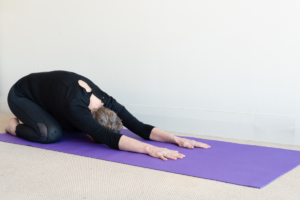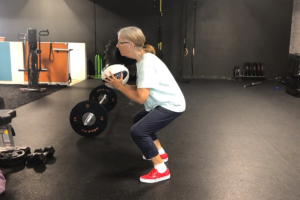Pain/Pain Management
Walking Benefits Low Back Pain
Consistent walking program reduced the need for back pain care by half in new study. Consider adding a walking program into the routine of clients coping with low back pain…
New Insights Into DOMs
Researchers reviewed studies on DOMS caused by eccentric contractions, noting instances when DOMS could be reduced.
R.I.C.E. Versus M.E.A.T.: What Method Is Best for Acute Inflammation?
A look at the R.I.C.E. method and why new research indicates using something called the M.E.A.T. method for acute inflammation may be better.
Walking Reduces Knee Pain
A regular walking program can reduce the incidence of new knee pain and slow joint damage for people over 50 coping with knee osteoarthritis.
No Risk of Osteoarthritis from Physical Activity
New research adds to our understanding of the limited risks of physical activity and its connection to osteoarthritis.
Lower-Back Pain and High-Intensity Training
Exercise is known to be an effective treatment for chronic, nonspecific lower-back pain — a common malady experienced by millions.
Restorative Yoga May Reduce Chronic Pain
Older women with chronic pain who participated in twice-weekly flow and restorative yoga classes experienced reduced pain.
The Dirty Little Secret in Fitness: Sue’s Story
Aches, pains, strains and stiffness can creep in, seemingly out of nowhere. For some of us, the pain affects the quality of our daily lives, and pinpointing the cause can seem like a wild goose chase. This was the case for the creator of the MELT Method, Sue Hitzmann. Developing MELT’s innovative approach to self-care—after an extensive dive down the rabbit hole of neurofascial research—was her ticket out of pain and many symptoms of aging. Two decades later, thousands of people have joined her on that journey.
Knee Pain and Self-Directed Exercise Program
A self-directed, web-based strength training program improved knee pain and function after 24 weeks for people with knee arthritis.
Recurring Running Injuries
A study found that recreational runners with a prior injury were twice as likely to sustain new running injuries.
Changing Attitudes About Managing Women’s Health
One solution that has recently come to market has been the innovative use of kinesiology tape infused with menthol and borneol as a means for delivering topical pain and inflammation relief. Mobility Tape for Her has created a real game changer!
Corrective Exercise Success Story
For many, watching a baseball game at home is a simple pleasure, but for retired teacher and baseball fan Leta, sitting on her couch for an extended period often meant debilitating backaches. In 2018, she found corrective exercise and functional-aging specialist Damien Joyner, JD. His patience and skillful training turned out to be a brand-new ballgame.
Exercise and Chronic Lower-Back Pain
Research supports the efficacy of exercise in alleviating chronic lower-back pain. The mechanisms, however, have remained unclear.
Impact of Training Through Pain
If your clients need more evidence that training while injured can be detrimental, new research suggests that the adverse effects on movement quality can linger even after an injury has fully healed.
What Is the Cause of Muscle Cramps?
Muscle cramps can stop athletes in their tracks. Although they usually self-extinguish within seconds or minutes, the abrupt, harsh, involuntary muscle contractions can cause mild-to-severe agony and immobility, often accompanied by knotting of the affected muscle (Minetto et al. 2013). And cramps are common; 50%–60% of healthy people suffer muscle cramps during exercise, sleep or pregnancy or after vigorous physical exertion (Giuriato et al. 2018).
Overcoming Pain to Stay in the Fitness Game
More and more people choose exercising at gyms and studios to stay healthy. The trend is occurring across the age spectrum, from baby boomers to millennials. Americans choose the convenience, expertise, and comradery found at gyms and studios to stay at their fitness best.
Muscle Cramps? Find Out Why
Muscle cramps can stop athletes in their tracks. Although they usually self-extinguish within seconds or minutes, the abrupt, harsh, involuntary muscle contractions can cause mild-to-severe agony and immobility, often accompanied by knotting of the affected muscle (Minetto et al. 2013). And cramps are common; 50%–60% of healthy people suffer muscle cramps during exercise, sleep or pregnancy or after vigorous physical exertion (Giuriato et al. 2018).
Alternative Pain Relief by Incrediwear
How much do you think your clients spend on pain relief? It’s a rhetorical question, but statistics show that the annual cost of healthcare due to pain ranges from $560 billion to $635 billion in 2010. This is in the United States alone, which combines the economic and medical costs to disability days, lost wages, and productivity.
Exercise and Pain: Teaching Clients to Follow the Signs
Until recently pain has been thought to be an indicator of the amount of tissue injury present in the body. The belief is that a high amount of pain equates to a serious injury, and a small amount of pain equates to a minor injury. However, through extensive research, we now know that pain has surprisingly little correlation to the amount of tissue damage present. For example, it’s estimated that 40% of people without any low back pain have at least one “bulging” disc on a lumbar spine MRI.



















